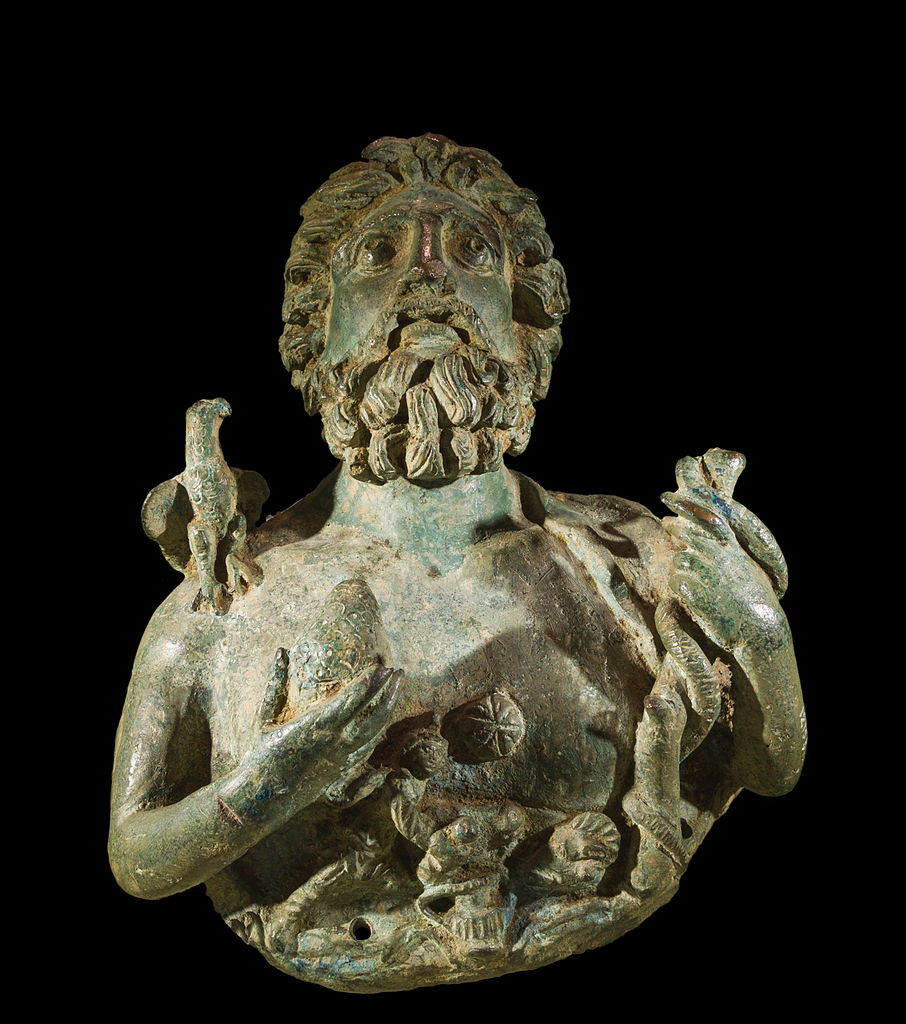
CIMRM 659 - Bronze items from Volsinii. Rome, Italy.

Bronze bust of god Sabazios, 2nd-century CE. Musei Vaticani, temporary exhibition (aug 2013) in Colosseum, Rome, Italy. 23 August 2013 Author: Jebulon
CIMRM entry
659.
VOLSINII
1) Cast bronze low-relief (H. 0.25 Br. 0.20) with four holes in it, probably for fastening it into a wall. Head and arms in. high-relief.
2) Embossed bronze relief (H. 0.17 Br. 0.26) also with four drill-holes. The exact find-spot is unkown. Uncertain is the information, that they should come from Bolsena, from where they "ex hypogaeo Herenniorum" together with other bronze objects came into the collection of Marchese Ravizza. Now in the Etruscan Museum, Room XII of the Vatican Collections.
Cumont in RA (S. 1) XIX, 1892, 189ff with Pl. X; MMM II 259f No. 104 with figs. 97/98; Helbig, Fuhrer, 13, 405 Nos. 750/751; Blinkenberg, Arch. Studien, 97f; Taylor, Cults Etruria, 158f; Cumont, Mithra en Etrurie, 96 n. 3; Alinari, 35501, see figs. 185 and 186.
1) A bust of a bearded god (Jupiter-Sabazios). The l. shoulder is covered with a cloak; on the other shoulder a perched eagle is represented. In the l.h. he holds a pine-cone; in the r.h. a broken branch with a snake winding itself around it. On the naked breast a sacrificial cake is represented in relief and a scene of Mithras tauroctone; to the right of it a ram's head and under it a krater.
2) Bust of a bearded god in Phrygian cap and tunica manicata. In the l.h. he holds a pine-cone: in the upraised r.h. a staff, decorated at the upper part and entwined by a serpent.
See also Musei Vaticani. Cat. 12158.
| Tweet |